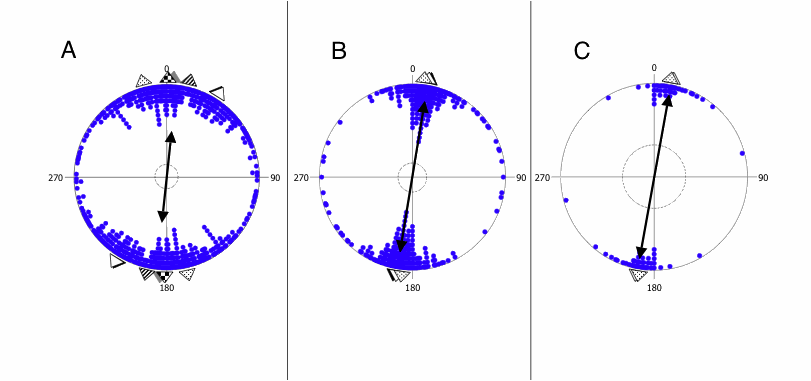Besides providing milk for their young, what do pigeons and cows have in common?

You may have noticed that herds of cows and deer when resting or grazing in an open field usually all point in the same direction. What might explain this pattern of behavior? Ungulates are social animals, so they might be taking cues from each other and aligning themselves so they see what the other members of the herd are up to. But, if that’s the case, why not just stand facing towards the center of a circle? And if they were orienting to avoid predators, they would be better off standing facing outward from a circle, so they could see a predator approaching from any direction. Perhaps they are just orienting towards or away from the wind or sun?
As fascinating as this behavior is to avid ungulate watchers, to date there has been little research on the topic. That was until Dr. Sabine Begall and her research associates tackled the question using satellite imagery of herds of ungulates from around the world. They looked at hundreds of observations and noted the direction that herd members were facing. For each location they collected information on prevailing weather patterns and sunlight direction during the time the photos were shot. None of the environmental cues provided any hint about what prompted the animal’s body orientation. That was until they looked at the magnetic field of the earth.

This figure from Dr. Begall’s paper shows the direction individuals were facing in herds of a) Cattle, b) Roe Deer, and c) Red Deer. Most individuals faced either towards magnetic north or 180 degrees in the opposite direction. That is, they seem to orient towards the earth’s fields of magnetic force.
This new set of observations has opened a whole new line of research for animal behaviorists and neurobiologists alike. If they are using the earth’s magnetic field, what sensory apparatus are they using to detect it? How is the information processed in the brain? Why do they do this in the first place? Is their some survival advantage to this behavior? And if so, what?
I’ll give one extra credit point on exam 1 to the first person that successfully explains the title of this post.
If you are logged on to a UMass library account, you can view the original article here:
Magnetic alignment in grazing and resting cattle and deer
Sabine Begall et al. 2008. PNAS, Vol. 105, No. 36.
Post by PWH.
